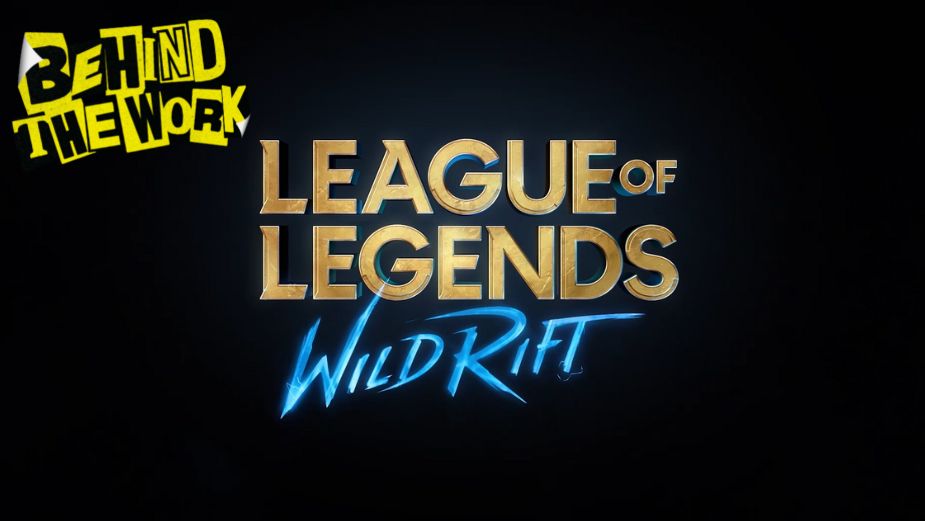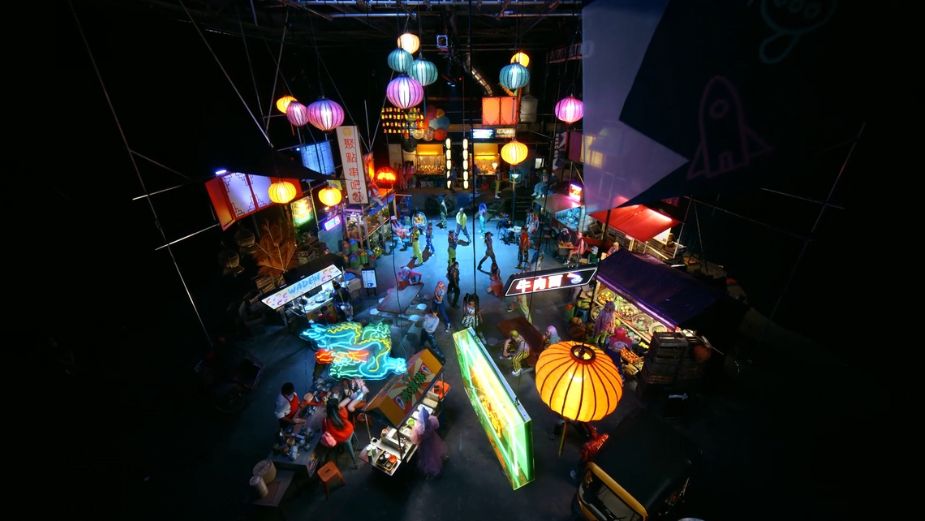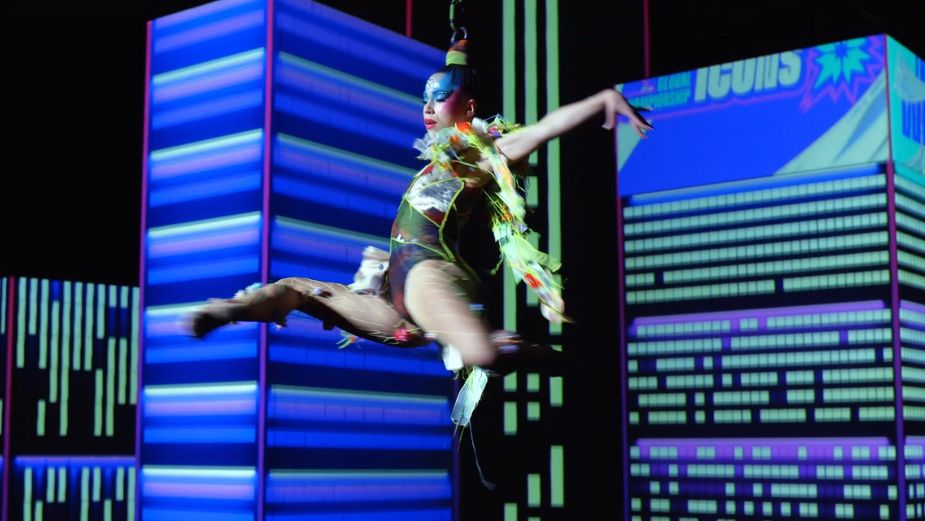
Tag’s Post Production Teamwork Shines Brightly in the League of Legends Intro for the Wild Rift Championship

Tag’s team of post and production pros were tasked with the grade, audio, offline and VFX for the League of Legends intro for the Wild Rift Icons Global Championship 2022, launched in Singapore at the start of July. The intro is a high-octane dance piece with a diverse cast, full of energy and stunning visuals that set the scene for the e-sport competition, which saw fans witnessing global teams compete for a prize pot of$2 million.
Sleek, punchy, and visually arresting, the trailer appeals to existing and potential players alike. The post-production process was key to achieving the final look, feel, and sound of the trailer with Tag working across all those categories. Mark Horrobin, head of colour, worked on the grade, helping to bring the director’s vision to life by enhancing the feelings of mundanity before a transformation into the fantastical. Neuma Llusiados Santos oversaw the whole post production process while audio engineer, Nick Olsouzidis, worked closely with the composer and the creatives to ensure that the sound design and the music blended “temporally and harmonically into one” throughout. Finally, Tim Davies and Richard ‘Stretch’ Russell’s VFX team (complete with Sunil Rao, Peter Hughes, and David Rose) took some inspiration from The Matrix, while ultimately putting their own creative spin on it to achieve a fantastic look under the client’s time constraints.
Everyone who worked on the post agreed that getting it done on time and on budget wouldn't have been possible had the team not been working under one roof and utilising the great relationship and communication they’ve established over many years. Below, the team talk LBB through exactly how this energetic and fantastical trailer came to life in post-production.
LBB> What was the initial brief like? How detailed/open ended was it?
Mark> The brief really didn’t come through until the day of the grade as the turnaround was so tight. I had a good half day with the DOP, Simon Chaudoir, to set the key shots. As ever, his lighting was immaculate, and we really just went with where the light took us. Afterwards, the client provided feedback that they’d like it a touch brighter and more colourful in the latter parts to dovetail a little better with the game itself.
Tim/Richard> There were broad strokes to go on initially, but as Ross started to flesh out his ideas, we began to discuss the techniques in finer detail and put together a detailed plan of how we’d divide our time. This was a job where for once, the deadline was very real and quite tight, so the look development of certain moments had to be turned around very quickly.
Nick> As is quite common in audio post, sound designers are brought in at the very last minute and this project was no different, we were last to join the party!
Picture lock was nowhere to be found and we quickly gathered that with the number of stakeholders involved the edit was likely to remain ‘unlocked” until only a few hours before the entire sequence had to stream live for the finals in Singapore…we were right!
We knew we’d have to be smart and produce a plan that allowed for constantly re-syncing our work to the latest edits and allowing for any major creative pivots to the story. On top of that, sound design needed to work with the music extremely closely, almost blending temporally and harmonically into one at points.
Our audio assistant, Diego Quintana, and our audio engineer, Matt Ennis, each took on a different section of the film. They track-layed, re-synced, track-layed and re-synced again and then track-layed some more as I focused on working with the composer and the creatives. Mark Yardley, music producer, set up in our studios and kept tweaking and exporting stems, helping us get the best and most crafted sound mix we could across the line.
LBB>As a producer overseeing the post for audio, grade, offline and VFX, what were your main considerations?
Neuma> It was essential that everyone needed to be on the same page. We were on board from a very early stage and had conversations with (shoot) production and the director before the shoot began. We needed to be very clear on what the creatives and production team were after so we could sync and match the style of the shoot.
One of the things that was never off the table was having an on-set VFX supervisor, who would be able to accurately identify the needs on their end. We were very much aware of the colour that would be set from the very beginning which enabled us to get the exact result they were after. To get that ball rolling, we also jumped on early conversations with the DOP and DIT, who also did some live grades during the shoot.

LBB> The look of the film blends the real with the fantastical. What was the grade’s main role in the final look?
Mark> Ultimately that was the idea. Begin with a sense of the mundane and then leap into the Wild Rift world. Again, this was largely accomplished by the lighting, as well as wardrobe and art direction.
LBB> Did you use any references for the VFX?
Tim/Richard> Surprisingly, not especially! Ross had asked us to add some punch to the hero's (TKay) main transition in her costume and sent a reference from The Matrix where the helicopter crashes into a building, but the moment we were working on did not have as much space as that reference, so we developed something far quicker but still building from that reference. The other main "visual" VFX in the final film is the magical trails that TKay sometimes generated, and these were developed from scratch taking a lead from some of the Key Art from the video game.
LBB> The spot balances VFX with reality. What kind of effect was the VFX utilised to produce?
Tim/Richard> Our plan was to help Ross achieve what he wanted in camera as much as possible. This involved developing the layers to use in a custom iPhone app and all the TV footage in the Game shop window which was played live on set.
Post-shoot we removed the motion control tracks and finessed the in-camera clothes changes as well as adding to a couple of specific moments mentioned above.
LBB>What was the most challenging part of the whole job? How did you overcome it?
Neuma> We had five to seven days to turn around the post, including offline editing. As I’ve said, we attended the shoot, and VFX supervised it. We had an offline editor during the week who was also assembling and sorting rushes and takes according to the STB so that we could work ahead.
Essentially, we were working like (dare I say) a very well-built machine, where as soon as something was signed off it would immediately go on to the next team for them to do their part, be fed back on and then on to conforming or audio. Every step we took was subject to change at any point, so we were also working under the premise that anything could happen (a bit of madness never hurt anyone!).
Time wouldn’t allow us to work in a traditional way. We even built some effects, glitches and other fun clips before shooting so that we could pop them in TV screens and phones during the shoot.
The best way to deal with all of this was to simply trust the entire team and know that every person involved knew exactly what they were doing. The best professionals and colleagues were involved in this project, and it was a real pleasure seeing this both during production and post-production.

LBB> Tag worked on the grade, VFX, audio, and editing for this project. Did you feel any benefits from so much of the post being done under one roof?
Mark> I don’t think we could have delivered if it had we not worked on it simultaneously. There was a selection of other films to be supplied to us for final mastering, with ours nested in. While completing the VFX work on ours we were able to simultaneously finesse the structure of the whole deliverable. We set up a timeline for delivery in Resolve and updated until the very last minute before making the final master. This workflow gave us the best opportunity to efficiently use the limited time we had.
Tim/Richard> We’ve nurtured all these crafts in tandem for years now and I can't honestly see how it could have been done any other way within the deadline that we were working to. Having the assistants, engineers, and producers and all the departments in the same building allows us a very smooth workflow. We all work off one server, whether we’re in the office, onset or at home. The benefits are enormous and enable us to stay creative (in all departments) all the way up to delivery time.
Nick> Being in the same building with the producers, offline editors, VFX and grading was really what made it all possible. Creatives and clients could move from one room to the next constantly reviewing and advising. They were wonderful and an absolute joy to work with. We ended up preparing not one but two versions of the film for final review!
Neuma> Seeing a project come to life with pretty much everything done in-house is probably one of the best things that can happen to us. Time was essential, and we were lucky enough to deal with the project internally, which sped things up massively. On an emotional level, working as a team, all of us together, is one of the great things in projects like this one.













